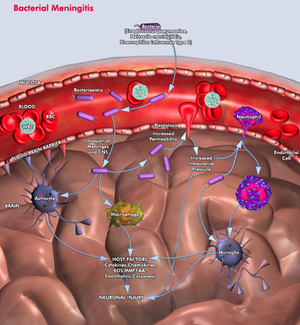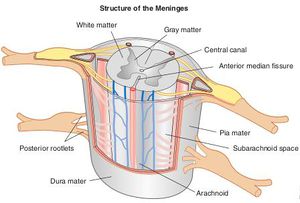Neisseria meningitidis causing meningococcal meningitis
Introduction

Neisseria meningitidis, gram-negative diplococci that cause meningococcal meningitis (magnified x 33000) (http://www.dailymail.co.uk/sciencetech/article-2197533/As-pretty-picture-lot-deadly--Killer-diseases-youve-seen-before.html).
By Kelsey McMurtry
Neisseria meningitidis is a gram-negative diplococci of the Proteobacteria phylum (7). This bacterium specifically causes disease in humans (1), and is one of the three main bacteria that causes acute bacterial meningitis, along with Streptococcus pneumoniae and Haemophilus influenzae. Of the forms of acute bacterial meningitis, Neisseria meningitidis causes meningococcal meningitis, which is among the top 10 causes of death due to infection across the globe, where one-third to half of people who survive the infection deal with permanent physical or mental side effects of the disease (2). These side effects, also known as sequelae, can include chronic fatigue and insomnia, which were symptoms found in those who survived epidemic meningococcal meningitis (2). In fact, these symptoms closely reflected those of individuals who experienced post-traumatic stress disorder following survival of septicaemia and septic shock (2).
Italic
Subscript: H2O
Superscript: Fe3+
Section 1
Hey there, how are you doing?
Section 2
Include some current research in each topic, with at least one figure showing data.
Section 3
Include some current research in each topic, with at least one figure showing data.
Conclusion
Overall paper length should be 3,000 words, with at least 3 figures.
References
[7] ["Neisseria Meningitidis." Wikipedia. Wikimedia Foundation, 22 Apr. 2013. Web. 22 Apr. 2013. <http://en.wikipedia.org/wiki/Neisseria_meningitidis>. ]
Edited by student of Joan Slonczewski for BIOL 238 Microbiology, 2009, Kenyon College.



